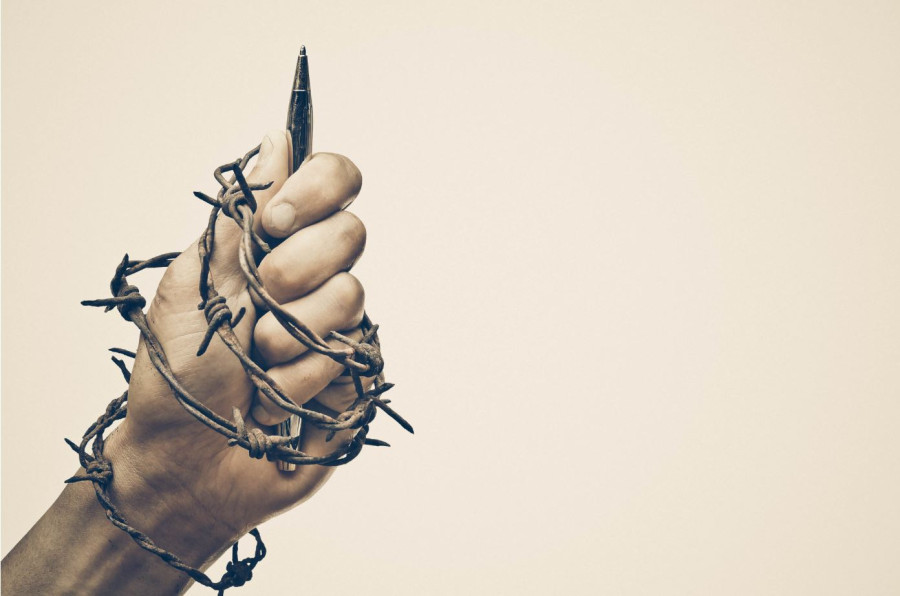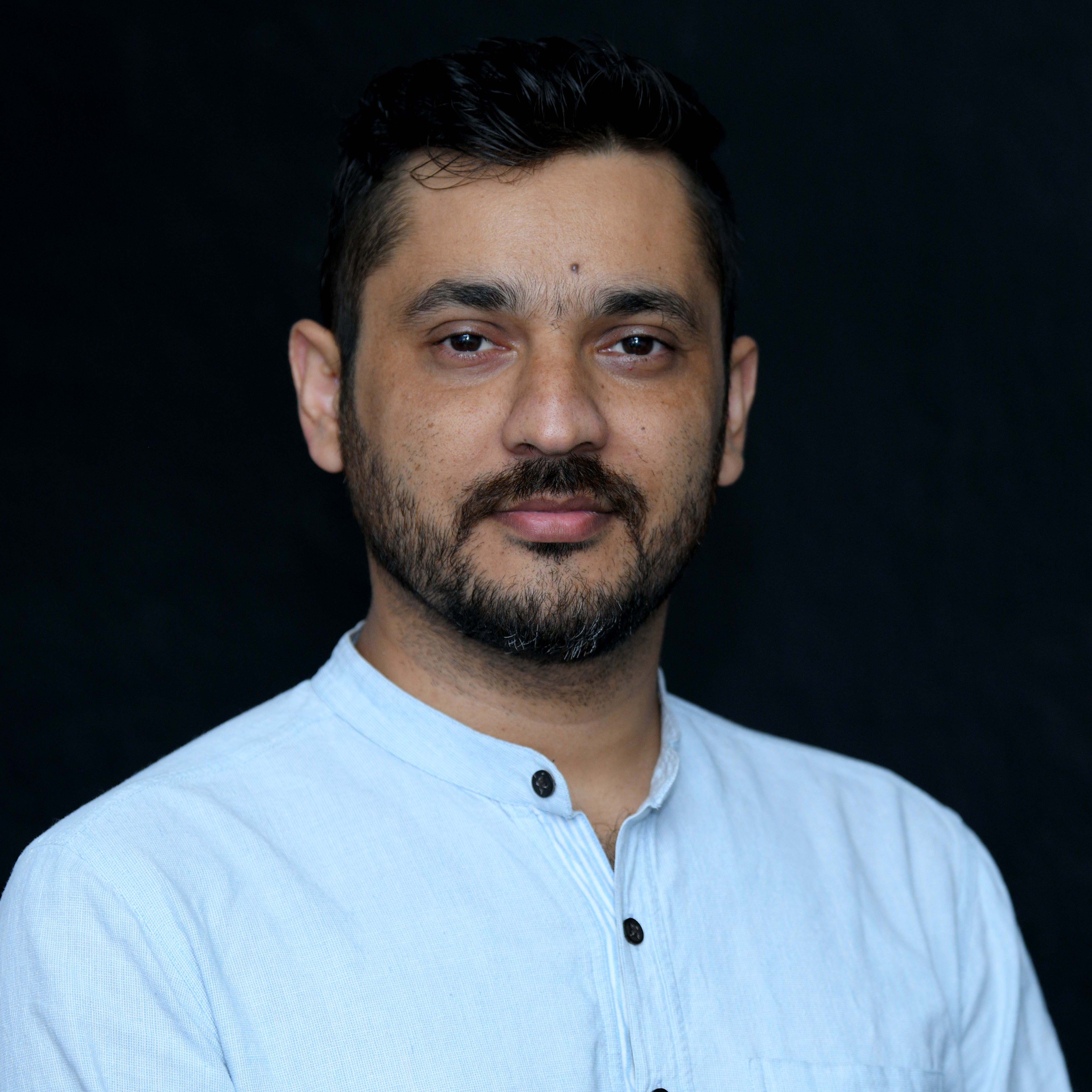Opinion
Creative freedom and fragile sentiments
The Supreme Court saw merit in the defendants’ pleas, and ruled to the effect that is necessary to consider whether the vocabulary used in the literary work is used to defame and demean a certain community or to highlight the stories of humiliation and misery that community faces.
Dinesh Kafle
“A decent chemist is twenty times more useful than any poet," says Yevgeny Bazarov, the protagonist of Ivan Turgenev’s 1862 novel Fathers and Sons. When I read the novel for the first time, I was perturbed, even disappointed, to find such an intellectually sophisticated character as Bazarov have utter disregard for poets. How could Turgenev present such a snob as his hero, I wondered.
Turgenev’s protagonist, as it were, dismisses institutions, authorities, arts, and even his own discipline, medicine. The novel’s hard-hitting critique of contemporary Russian society through the tragic story of a nihilist offended old aristocrats and young idealists alike. Turgenev had fallen out favour of ideologists of all hues overnight, but it was also a proof that he had hit where it mattered.
Fragile sentiments
The Turgenev episode came to my mind in the last week of April when two events related to literature brought a mini-tornado in the teacups of Nepali readers, critics and activists primarily active on Twitter. The debate surrounded the limits of authorial freedom when it comes to representing marginal communities in literature.
The first of those events was the Supreme Court’s judgement, on April 27, on the case filed by the Badi Council against writers and publishers two literary works—Nathiya and Ailani—and the director of the film Pandit Bajeko Lauri. The plaintiffs had pleaded that those literary works and the filmhad used a derogatory vocabulary to describe the Badi community, thereby hurting the sentiments of the community and creating a ‘communal discord’. These works, they claimed, violated, especially, Badiwomen’s constitutional rights to dignity and effectively instituted caste-based discrimination.
The defendants, on their part, pleaded that as artistes they were simply fulfilling their duty of highlighting the misery of the Badi community. One of the defendants, Saraswati Pratikshya, author of Nathiya, later wrote that her role was that of Gayatri Spivak’s intellectual who speaks for the subaltern because the subaltern herself cannot speak.
The Supreme Court saw merit in the defendants’ pleas, and ruled to the effect that is necessary to consider whether the vocabulary used in the literary work is used to defame and demean a certain community or to highlight the stories of humiliation and misery that community faces. In the present case, the Court said, the vocabulary was used to contextualise the story and that it made no sense to interpret it otherwise.
The Court also put the onus on writers to ensure that their writings do not demoralise any individual, class or community. The apex court’s exhortation to writers, their subjects and readers to follow an ethics of tolerance, criticality and respect vis-à-vis literature is a win-win for creative freedom, hermeneutic possibilities and marginal discourse.
The second event was the publication, on April 28, of a story titled “The secret adventure of a rich woman”, in The Kathmandu Post. The story’s protagonist, a middle-aged woman, takes sexual gratification by molesting young, unsuspecting women in public vehicles. “Packed buses are a perfect opportunity for me to touch a female,” the protagonist says. “A simple caress on their back or an elbow to their breasts. And yet they don’t seem to realise that I have been doing it intentionally.”
Some readers were horrified to see the seemingly ‘problematic’ story that ‘legitimises’ sexual harassment in public transport get published in a mainstream newspaper. As much as the story was distasteful, they said, the Post’s publishing of the story also reflected poorly on its editorial-ethical standards. They also claimed it was a direct attack on the sentiments of the LGBTQI+ community. Verbal knives were apparently trained on the author, Mallika Chaulagain, who said she had grown “anxious and demotivated” due to the “hate comments” she received. She said she deactivated Twitter briefly but is now determined to continue to write as she also received considerable support and constructive feedback.
Freedom and responsibility
Although the short attention span of Twitter debates means that the events have now been left far behind, the events merit a more sustained discussion. After all, they broached fundamental questions about the function of literature and the limits of creative freedom.
There is no doubt that authors are expected to use their conscience in responsibly representing politically and socially volatile matters. But should writers actually be responsible for the way their work is interpreted? And are they expected to self-censor in the anticipation that their work might hurt the sentiments of a section of their readers? Should they not distance themselves from the repugnant ideals of their characters? Scottish philosopher David Hume makes a clear distinction between what he calls “speculative errors” and “morally reprehensible ideas”. While the former makes little impact on the aesthetic quality of a literary work, he says, there is nothing tolerable and aesthetic about morally repugnant works.
Every reader is entitled to scrutinise a work of literature in her own way, precisely because the strength of a literary work lies in its immense hermeneutic possibilities. The insistence that literature should be written from an ethically and politically correct standpoint runs the risk of turning a work of art into a moral epithet and depriving it of its capacity to shock the readers by showing a mirror to their inner selves. This is precisely what distinguishes human sciences from natural sciences. As German philosopher Wilhem Dilthey put it, unlike natural sciences that aim at a reductive explanation of the world, human sciences aim at understanding lived experience of the human world. And it is in literature, Dilthey says, that “the inner life of man finds its complex, exhaustive, and objectively intelligible expression.”
Hermeneutic possibilities
As a mimetic art, literature functions by exploring human emotions, relationships, behaviours as they are and not as how they ought to be. And that is what puts literature separate from the moral sciences or political philosophy. Writing on these pages a few years ago, Ajapa Sharma, following Russian critic Mikhail Bakhtin’s dialogic imagination, explained how “any compelling literary work holds the possibility of sustaining the visions of a world not dominated by one single logic or a single way of seeing things within it.” Bakhtin sees in Fyodor Dostoevsky’s works the existence of polyphony and dialogism, meaning that they contain many different voices that are not subordinated to the voice of the author. Unlike a monologic, authorial intervention, the dialogism that Bakhtin invokes allows an interaction of a multiplicity of ideologies and perspectives.
So the interpretation that the characterisation of a predatory lesbian woman in a story exemplifies the author’s or the publisher’s dodgy ethical integrity falls short of understanding of dialogic possibilities that lies at the heart of literature’s especially fiction’s mimetic principle.
As Nigerian-American author Chimamanda Ngozi Adichie would put it, we risk a critical misunderstanding if we expect that a story is told in a singular way. Each story can be told in multiple ways, and each telling merits a nuanced interpretation. If as readers we have the right to be offended by such a telling, we may as well be prepared to be offended by it.
Kafle tweets at @dineshkafle




 17.67°C Kathmandu
17.67°C Kathmandu












